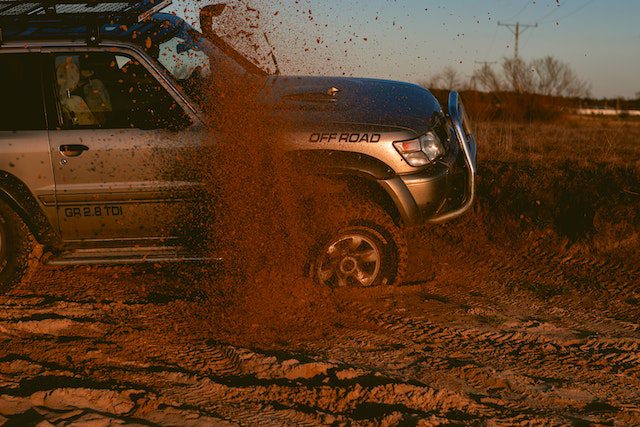

Snow is a fun activity that many people enjoy, but it can be dangerous if you don’t know what you’re doing. In this article, we’ll take a detailed look at two different types of cars, snow-driving vehicles with 4WD and those with AWD, to see which type would better help you in snowy conditions. Read on!
What are 4WDs and how do they work?
4WDs come in two different types, wd and 4×4. wd is a front-wheel drive while 4×4 is a all-wheel drive. Most people think of 4×4 as the better option because it provides better traction in snow or mud. But is that really the case?
A lot of people think that front-wheel drive is better because it provides more torque and stability. In fact, most vehicles with front-wheel drive have a lower center of gravity which makes them easier to handle in tight spaces.
But there are some advantages to all-wheel drive in snow or mud. For one, all-wheel drive can provide more power when you need it. This means that you can go faster and stay on the track better than if you were driving with just the front wheels.
Another advantage to all-wheel drive is that it helps to prevent spinlocks. A spinlock is when the vehicle starts to spin around in circles, which can be dangerous and even deadly. All-wheel drive prevents spinlocks by distributing the weight evenly across the entire vehicle.
What is the Difference between 4WD and AWD in snow conditions?
When it comes to driving in snow conditions, there are a few key differences between 4WD and AWD.
4WD systems work best in sand and gravel roads, while AWD systems are better on snow-covered roads.
4WD systems are better at handling off-road terrain, while AWD systems are better for cruising on the highway.
4WD systems are typically more expensive than AWD systems, but they can provide greater versatility when it comes to driving in snow conditions.
AWD systems are considered one of the most reliable ways to get around in the snow, but they can be more expensive than 4WD systems.
Which is better for my vehicle: 4WD Or AWD?
There is a lot of debate regarding which type of vehicle is best for the snow: 4WD or AWD.
4WD is better for vehicles that are designed for off-road use. It allows the vehicle to move more freely and smoothly in snow and ice.
AWD, on the other hand, is better for vehicles that are used on roads. It allows the vehicle to make better use of traction and provides better handling in snow and ice.
Advantages of 4WD:
1. Stronger traction: 4WD vehicles have improved traction in snow and ice than AWD vehicles. This is because the front and rear drive wheels are independently driven, which gives them more stability and grip in slippery conditions.
2. More control: When driving in snow or icy conditions, you have more control over your vehicle with 4WD compared to AWD. With AWD, the power distribution between the front and rear wheels is typically equal, which can make steering difficult in adverse conditions.
3. More stability: 4WD vehicles are more stable in extreme conditions than AWD vehicles. This is because they have a greater ground clearance and more weight on the front and rear axles, which gives them better stability when driving off-road or over obstacles.
4. More fuel efficiency: In snowy or icy conditions, 4WD vehicles use less fuel than AWD vehicles because they require less rotating effort from the engine to get them moving.
Disadvantages of 4WD:
1. Requires more maintenance: 4WD vehicles require more mechanical upkeep than most other types of vehicles. They also will wear out faster than a standard vehicle.
2. More difficult to repair: Parts for AWD vehicles are far easier to find, as they may be used in both AWD and 4WD vehicles. Because every part is unique to the type of vehicle, it may be harder for an auto mechanic to know exactly what part is needed to fix your car or truck, or have them available if there is a recall on your particular model of vehicle.
3. More expensive: The addition of extra components like a transfer case and front differentials will increase the price of your car or truck over time, as well as add weight to your vehicle.
4. More maintenance: Having more parts to maintain may add to the time and money it takes to fix your vehicle, costing you more in the long run.
Advantage And Disadvantage Of AWD
When it comes to handling in snow, all-wheel drive (AWD) is generally considered to be the best option. This is because AWD allows the drivetrain to distribute power more evenly across the rear axle, which helps to improve traction and handling in slippery conditions.
However, there are some disadvantages to AWD. First, AWD can be less efficient when driving on straight roads. This is because the engine has to work harder to send power to all four wheels. Second, AWD can be more difficult to operate in slippery conditions, as the driver must constantly monitor the traction of all four tires.
Conclusion
Overall, though, AWD is generally considered to be the better option when it comes to handling in snow. So, which of these two systems is better for your car? It all comes down to personal preference. In general, though, AWD systems are a great choice for those who live in colder climates. They give drivers more control over the vehicle when driving in icy or snowy conditions. On the other hand, for car owners who live in warmer climates, 4WD systems are the better choice. These systems give drivers more traction by using all of the wheels equally.




